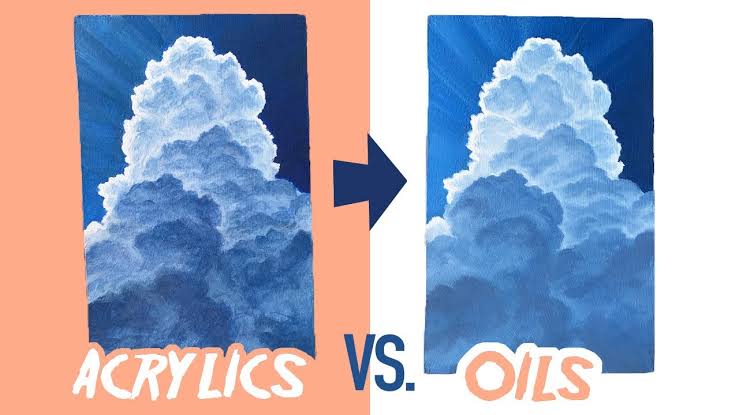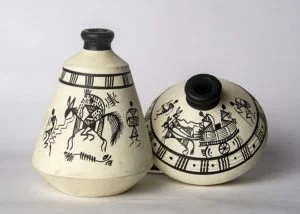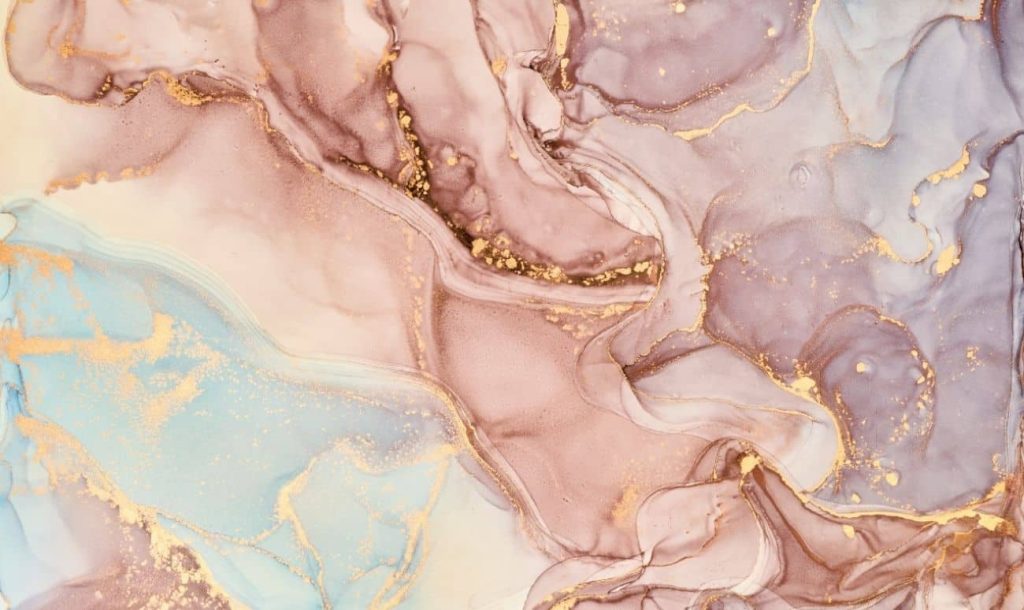Paints are the heart and soul of a painting without which it can never get fully accomplished. They have the ability to transform a simple drawing into a lively and realistic masterpiece. But in the world stacked with a plethora of paint types, brands, variety, etc one gets confused as to which kind to pick? Especially the question of Acrylic vs Oil paints becomes super daunting as you’ll find different people taking up differing stances.

Now, let me get one thing straight! A single type of paint can never be absolute or better because each one of them has its own specific benefits which make them unique.
It’s you who need to figure out which one will work the best for you and your requirements. Get yourself away from people blindly raving about one of them but evaluate yourself and pick your perfect fit. Below is a comparative study between Acrylic vs Oil Paints.
History of Acrylic vs Oil Paints
As per the roots of art history, Oils sit on the throne and takes the pleasure of being called ‘Classics‘. Their development and widespread usage date back to the 12th century which is undoubtedly much older than the young Acrylic Paints.
Some of the iconic paintings like Mona Lisa, Starry Night, etc which survived the test of time and are cherished forever in the world of arts and painting were prepared using the Oil paints themselves.
So, if you are someone who wishes to walk in the footprints of these legends then oils are undeniably the best choice out there.
Acrylic paints, on the other hand, are much younger and a product of chemical experimentation.
They were made available in the markets around the 1950s. They are categorized as inhibiting the acrylic polymer emulsion. However, they work with water easily unlike oils and have plenty of benefits as well. Check out below to find out more.
Also read Watercolour Painting: The Ultimate Guide for Beginners
Drying Time Can Change the Game
The time that your painting takes to dry is extremely essential as it determines the scope of progress you hold in your hand. As an artist one is always inquisitive and looks for improvement or modifications whenever possible. If you are that kind then it’s better to go for Oil paints.

Yes, Oil paints take a lot of time in order to get completely dry, and hence if you wake up another day feeling an urge to blend a bit more or make a shade more bright then oil paints offer room for that.
Acrylic paint gets dried up quickly and therefore it seems like “what’s done cannot be undone” as there is no scope for modification. If you try to force changes and add a new layer of paint on the painting then it’s only going to ruin it further as now it will look patchy and cakey.
Hence, you can prefer Oil paints over Acrylics any day when it comes to modifications and changes.
Lightfastness and Aging
You must have seen old paintings getting a yellow hue which successfully reflects their age. According to the property of lightfastness if a painting is kept exposed to light over a long period of time then the original colors becomes dull and oil within it starts showing through. This generally happens with the Oil paints and such paintings gets a yellowish effect
Acrylic paints, on the other hand, are non-reactive to the light conditions and hence remain the same throughout. Using them you don’t need to worry regarding the yellowing of the painting.
Therefore, if you are someone who loves to see your painting grow and get old with time then go with Oil paints and if you want it to be the same and immortal then Acrylics are the perfect pick for you.
Room for Blending
Blending is something that transforms a simple painting into a masterpiece. Have you ever imagined what makes a painting look natural and full of depth? It’s the art of blending the edges. The more smooth the edges are going to be the more depth it adds to the painting.
It’s of utmost significance to blend both the hard and soft edges together in order to give your painting that master touch. Oil paints do miracles to painting when it comes to blending the edges and makes it look three dimensional. They help to control the viewer’s eye as hard edges attract attention while soft edges don’t.
Acrylic paints dry very fast and therefore it is not possible to blend the edges properly thereby they end up giving the painting a sharp look. Although there are additives to mould its consistency but offers no comparison to oil paints.
So, picking oil paints is better when blending comes into play.
Caution Regarding Color Shift
The thought of color shift is indeed unsettling as the fact is difficult to digest that all your efforts and diligence went into vain because the final painting is not something that you wanted it to be.
When after drying the painting the shades of color that you used become darker and start looking unnatural there is no scope for modifications and you are forced to do peace with it.
Generally, Acrylics display this property of colour shift and makes it quite difficult to judge values especially while making portraits as a lot of thought is involved that which shade to pick in order to tackle this limitation.
If you are a beginner then it will not bother you much but intermediate and professionals find it difficult to deal with such problems. In such a case Oil paints come to the rescue as they remain almost the same even after drying up and color shift in their case is minimal.
Also read Ideas For Crafts You Need To Check Out!
Giving Way to Experiment
Sometimes moulding the properties of a specific kind of paint allows us to experiment with new things and unique painting can result from it. This can happen by mixing other substances with the paints which alter their chemical properties and a new texture is obtained.
Generally, Acrylic paints provide space for mediums to get mixed up with them thereby resulting in new special properties such as making Acrylic paints thicker which helps in knife painting and also delays their drying time so that subtle modifications can be made.
Oil paints do not allow such mediums or mixins to alter their properties. So, in this case, Acrylic paints are a clear winner.
Plunging into Pigmentation
Paints that are less pigmented often turn your painting dull and boring that lacks the charisma to a large extent. Pigmentation is what improves the quality of the painting and makes it stand apart with the vitality it offers such that one can step inside the painting.
It adorns the painting with a copious amount of brightness and saturation.
Oil paints are the best when it comes to offering high pigmentation and this is pretty much evident in the classic iconic paintings as till now their rich paints have remained intact. Acrylic paints do not offer that amount of pigmentation relatively.
Therefore, Oil paints are a better pick over Acrylic paints if pigmented and bold paints are your priority.
Final verdict on Acrylic vs Oil Paints
Evaluate and analyze your requirements first and thereafter pick up either one of them as only then it will be much more efficient and valuable. Hope you make the right choice.
Share with your friends





